The Carolingian Sword That Inspired the Vikings to Raid
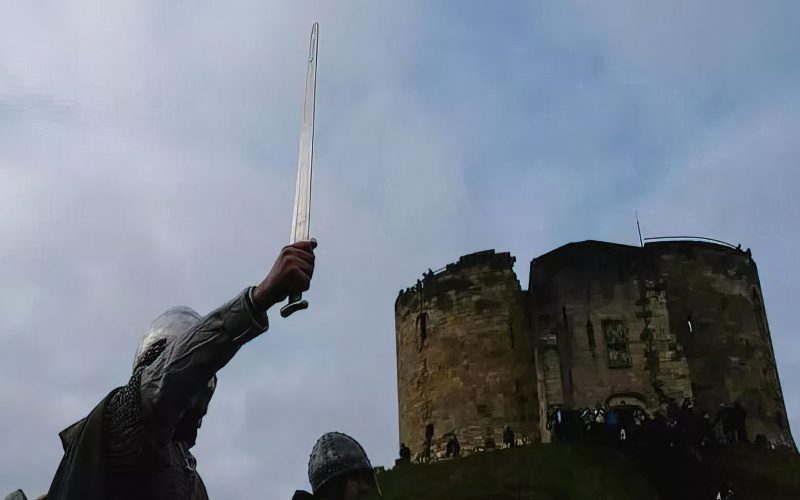
What’s in this article?
The double-edged medieval weapon known today as the Viking Sword was originally called the Carolingian sword. The Viking Era spanned from roughly A.D. 800 to the 11th century, around the time of the Norman Conquest.
The Vikings were known for their uncivilized ways, which gave them an unfavorable view throughout the more established regions of Christianized Europe.
The main reason behind Europe’s negative view of these people was their pillaging and looting, ultimately leading to the seizure of several of their possessions. One of them was the Carolingian sword. This article will discuss its characteristics, uses, history, and the confusion behind its name.
Characteristics of the Carolingian Sword
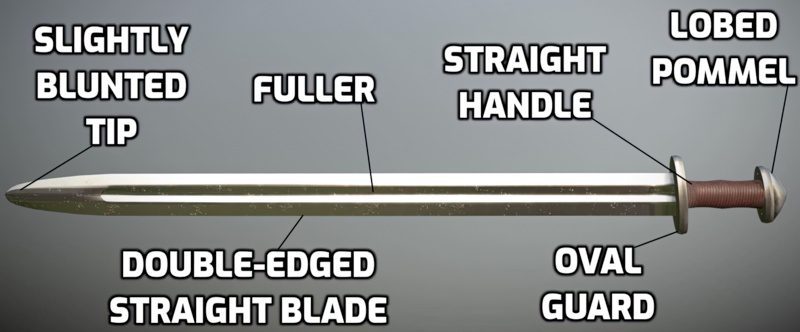
The most visual characteristic of the Carolingian sword is that it has a double-edged blade, a sharp but somewhat blunt tip, and an oval-looking guard with a straight handle resembling the letter H with its pommel at the end. It is the most popular early medieval sword, upgraded from the previous Migration period sword and the larger and late Roman Spatha.
Blade
The Carolingian Sword has a straight, double-edged full tang blade that is broader than the typical medieval sword. It is often designed with a slightly blunted. The sword was made for hacking and slashing attacks rather than thrusting, though the weapon could easily excel at both methods of offense.
Carolingian swords are known to have plenty of blade inscriptions, such as the name of the manufacturer. This was purely a Frankish innovation that was hardly seen before the creation of these swords. The most well-known type is the Ulfberht group of blades. The tradition of inscribing blades was passed on to many others, primarily the Viking chieftains.
The blade length of the Francian Carolingian Sword was usually in the range of 23 to 35 inches (60 to 90 cm) and was much more rigid than the previous swords, thanks to the introduction of high-quality steel. After the right amount of tempering and correct heat treatment, the blades could also feature a fuller to make it lighter by removing the amount of steel in the fullers.
Guard
The oval-shaped medieval popular guard was also used in the Carolingian sword. This type of straight guard offers protection to the user’s hand but is mostly there for a better and stronger grip on the handle. There are rare instances of narrowed guard quillons toward the blade.
Handle
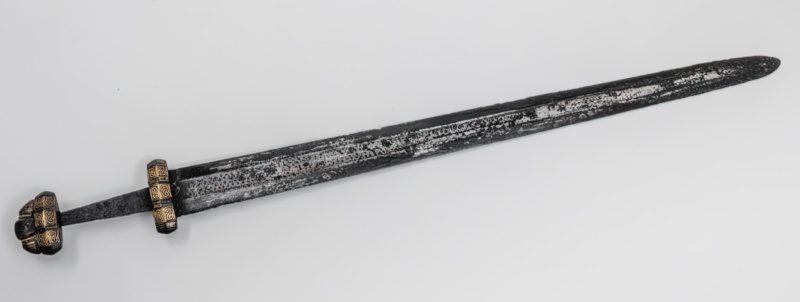
Carolingian swords also have unique and well-recognized handles. The most typical one you see is the H-type with a straight guard, a straight and very thin handle that is basically the sword sticking out from the guard and just large enough for one-handed grip and use. The most usual handle length for the Carolingian sword is 6 inches (15 cm).
Pommel
The most usual pommel of the Carolingian sword is the lobed or hat pommel, with its unique characteristics. As time passed, the design of the pommel changed, especially in the hands of the Vikings. The pommel is known to be highly decorated with a large number of rare metals and inscriptions added to it. There are also instances where it was narrowed or rounded with an opening, making it a type of Ring Sword.
Scabbard
Scabbards had multiple layers, including a lining, wood, and an inner and exterior covering often made of cloth or sheepskin, which cushioned the leather sheath and blade. The outside shell of the scabbard was constructed from multiple layers of wood, leather, fabric, and in some cases, metal. Sometimes the scabbard could be more expensive than the sword itself if it was designed to represent authority and status by featuring very rare metals and gems!
Length
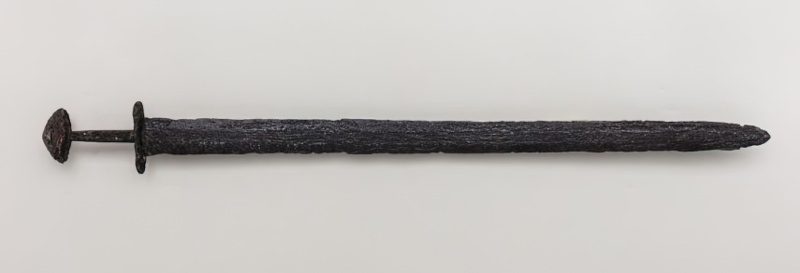
The most common overall length for the 8th and 9th-century Carolingian sword was around 27 to 39 inches (70 to 100 cm), allowing it to be used as a one and two-handed weapon. However, the weapon was mostly used one-handed by infantry and, at times, by cavalry.
Weight
The Carolingian Sword can be fairly light, weighing around 2.8 lbs (1.3 kg), making it a very effective weapon to deliver fast slashing strikes. Despite its lighter weight, the weapon was still potent enough to provide deadly blows to shields or enemy armor. As mentioned above, once the fuller was added to the blade, it made it lighter.
Uses for the Carolingian Sword
The Carolingian Sword is a one-handed double-edged bladed weapon that could be used in hacking and slashing attacks but simultaneously have a powerful stabbing thrust if required. It is a fairly light sword, most often combined with a shield in the other hand.
Warfare
Having a sword in the early Middle ages was quite a privilege and something that only a few lucky ones could have. The increased complexity of medieval steelmaking and metallurgy, along with the loss of the cheap labor provided by slaves, led to dramatically higher production costs, which in turn drove up the selling price of swords. The Carolingian sword was primarily used in several types of battles, whether for territorial conquest, religious ideals, or plunder.
It was an infantry weapon and heavily linked with the Scandinavian Vikings. Still, in Francia, it was mostly used by mounted units and nobility.
Symbol of Status & Ceremonial
The Carolingian Sword was an extremely expensive weapon, which is why it was very rare, making its status and ceremonial rank much higher. If the weapon were purchased today, it would be worth between $1200 to $1500 US dollars. Because it was mostly owned by high nobility, having one meant high prestige as it was linked with royalty.
This popularity and high position meant that the Carolingian Sword wasn’t given to outsiders. King Charlemagne was known to give swords as gifts to nobles on occasion. However, he did not present Carolingian swords but foreign Avar swords from successful conquests.
Carolingian swords were extremely valuable; therefore, they fetched high prices and were bought and sold by many opening a wide trade network.
Trade
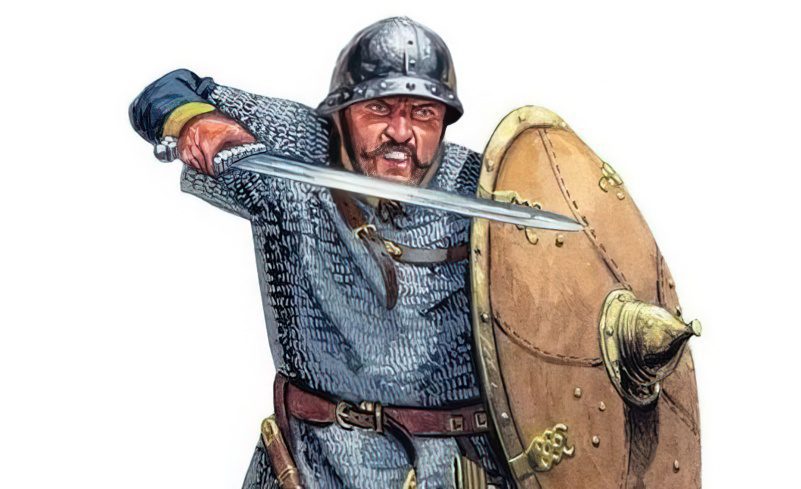
The Carolingian and Francian Empires saw good economic income from their swordcraft thanks to the Carolingian sword. As the Western Roman Empire collapsed, trade hubs around Western Europe flourished, leading to the sale of many Carolingian swords. The trading range extended to Ireland, Spain, and The Byzantine Empire to modern-day Kazan in Russia. While it was also sold in Scandinavia, it was mostly taken by force.
Modern & Beginner Friendly
Today the Carolingian Sword is one of the most popular swords used in reenactments pertaining to The Middle Ages. It is commonly worn by LARP (live-action roleplaying game) people playing Vikings because of its other name. The Carolingian sword can also be seen in modern media, such as historical films, documentaries, anime, and video games like Assassin’s Creed.
If you want to be trained with an early medieval sword, then the Carolingian Sword is an excellent choice. It is a very simple-bladed weapon that is lightweight and easy to master, and some sword enthusiasts may consider it one of the best beginner-friendly medieval swords around.
History of the Carolingian Sword
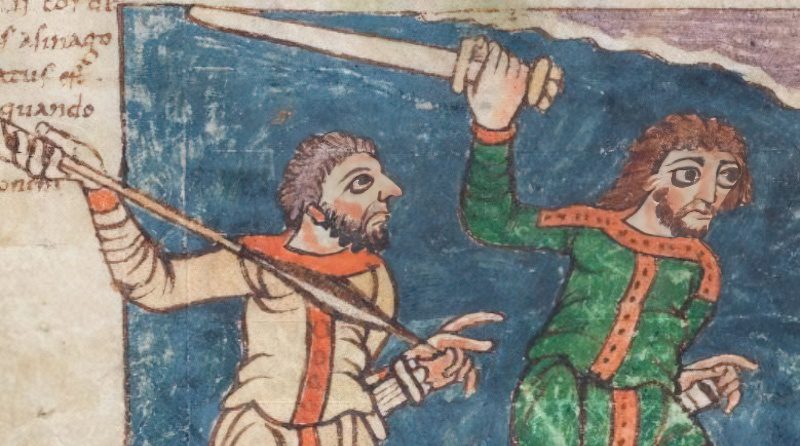
The Carolingian sword was invented in 8th century Francia, known as the Carolingian Empire at the time (a large territory in mostly modern-day Germany and France). The sword of the Merovingian period, known as the Migration Sword) gave rise to this sword. This is especially true of the Frankish production of swords in the 6th and 7th centuries, which were derived from the Roman Gladius and Spatha.
Although there are very few archives and writings on the Carolingian period about their swordsmithing and craft, the Franks were the experts of swords in North and Western Europe during its early history. As higher-quality steel became available, many professionally designed steel-bladed Carolingian longswords overtook the older pattern-wielded swordcraft.
This excellent sword crafting expertise came from the older Roman knowledge, but credit also goes to the large diplomacy network with the east (for example, the Abbasid Caliphate with their Damascus steel swords).
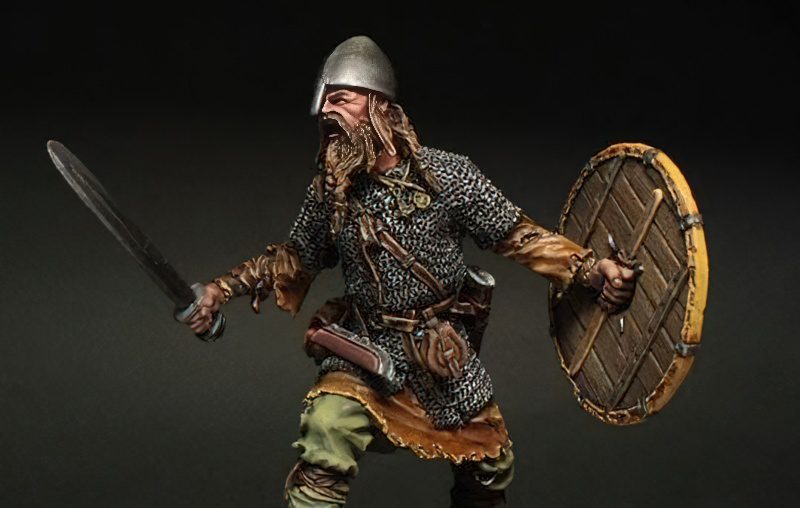
These new types of swords emphasized their weight at the blade’s tip and had one straight piece of metal in the construction that was much more durable, lighter, and stronger for use in slashing rather than the older thrusting Migration and Spatha swords. They were so popular that the Carolingian empire had a booming economy selling them worldwide as well as attracting many unwelcomed visitors.
These visitors were the famous Scandinavian Vikings who had a keen likeness for swords, especially the Carolingian Sword that could be obtained by plunder. Over time, the name of the sword changed completely, and today it is mostly known as the Viking Sword.
Why is it called a Viking Sword?
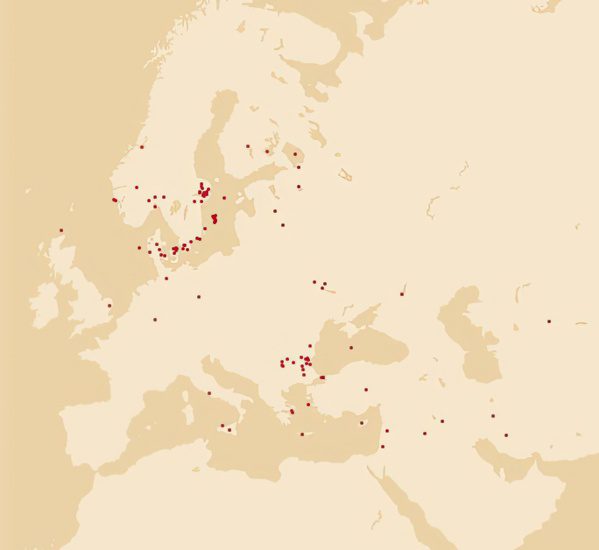
The Carolingian Sword is seen as part of the Viking Age Swords today because of its much later findings, as well as being liked and used by the Vikings.
The spread of Christianity through western Europe, including the Frankish Carolingian Empire, meant that weapons placed inside their graves were substantially smaller. This tradition, however, remained in Paganic and Norse Scandinavia. We see this evidence from the many sword excavations in the region and in the regions where they mostly traveled and served.
Carolingian swords were famous, and having one was as prestigious as having carried out several successful raids. This explains why they were obtained through trade with Carolingia. However, having supplied their enemies caused Charles The Bald, the Carolingian 9th-century Emperor, to ban the trade of the Carolingian Sword with Vikings completely.
The punishment for anyone caught disobeying the law was death. Some scholars might say that the reason behind this ban caused the Vikings to raid Western Europe in search of the Carolingian Swords to bring with them to Valhalla.
Conclusion
The Carolingian Sword is one of the most influential weapons that took aspects of ancient swords and popularized them through the Middle Ages and into the Renaissance. A battle-ready or decorative handmade sword of this type is a must for any sword enthusiast.




